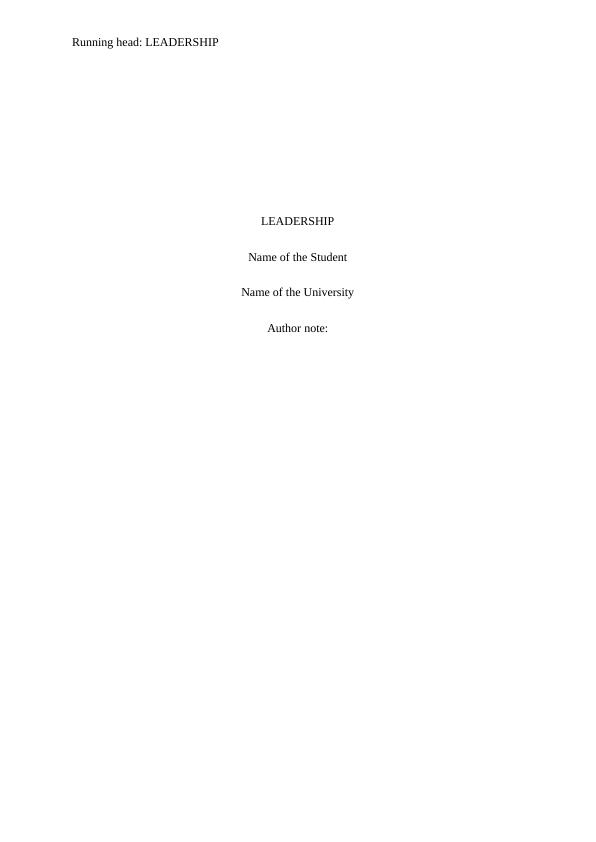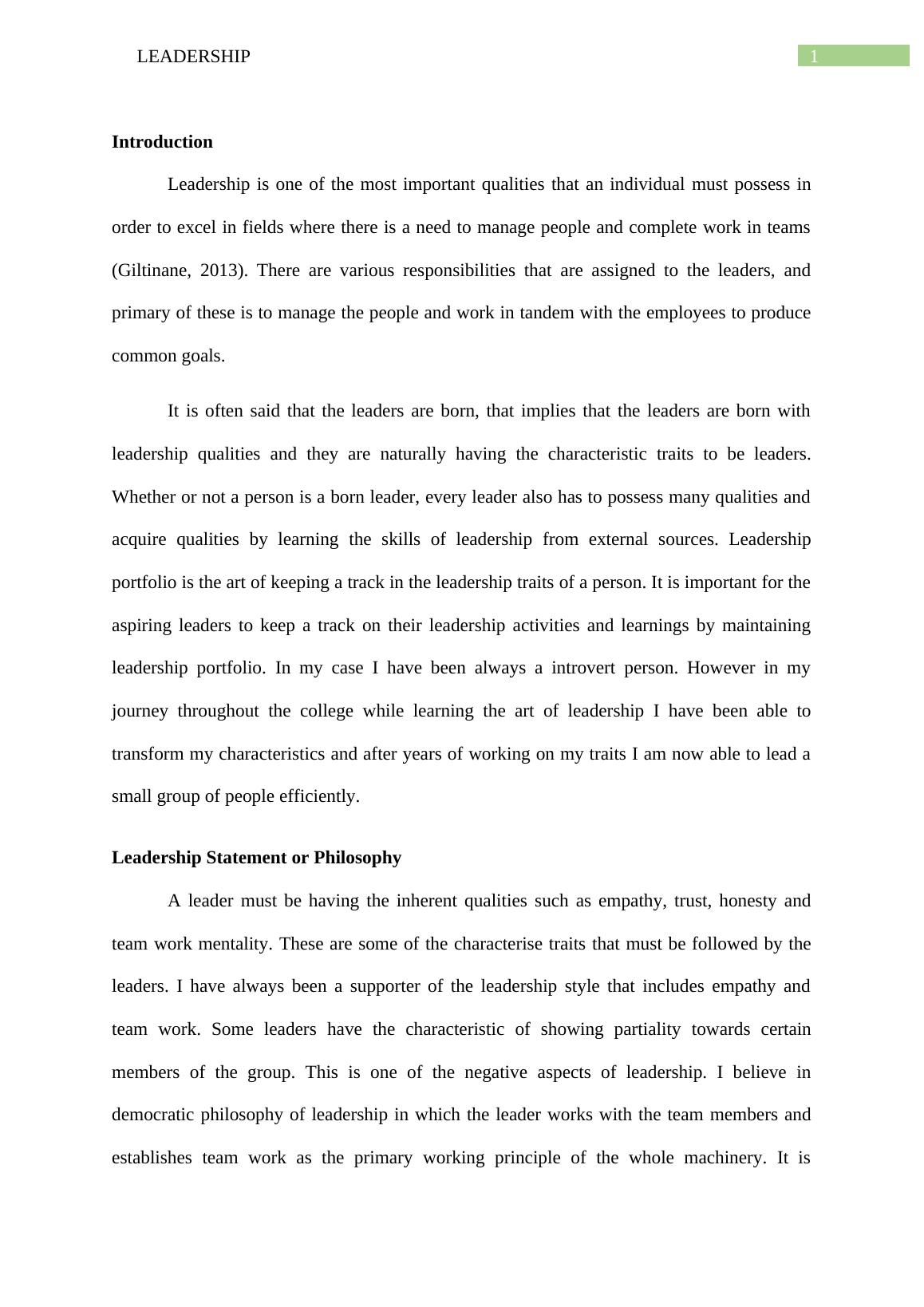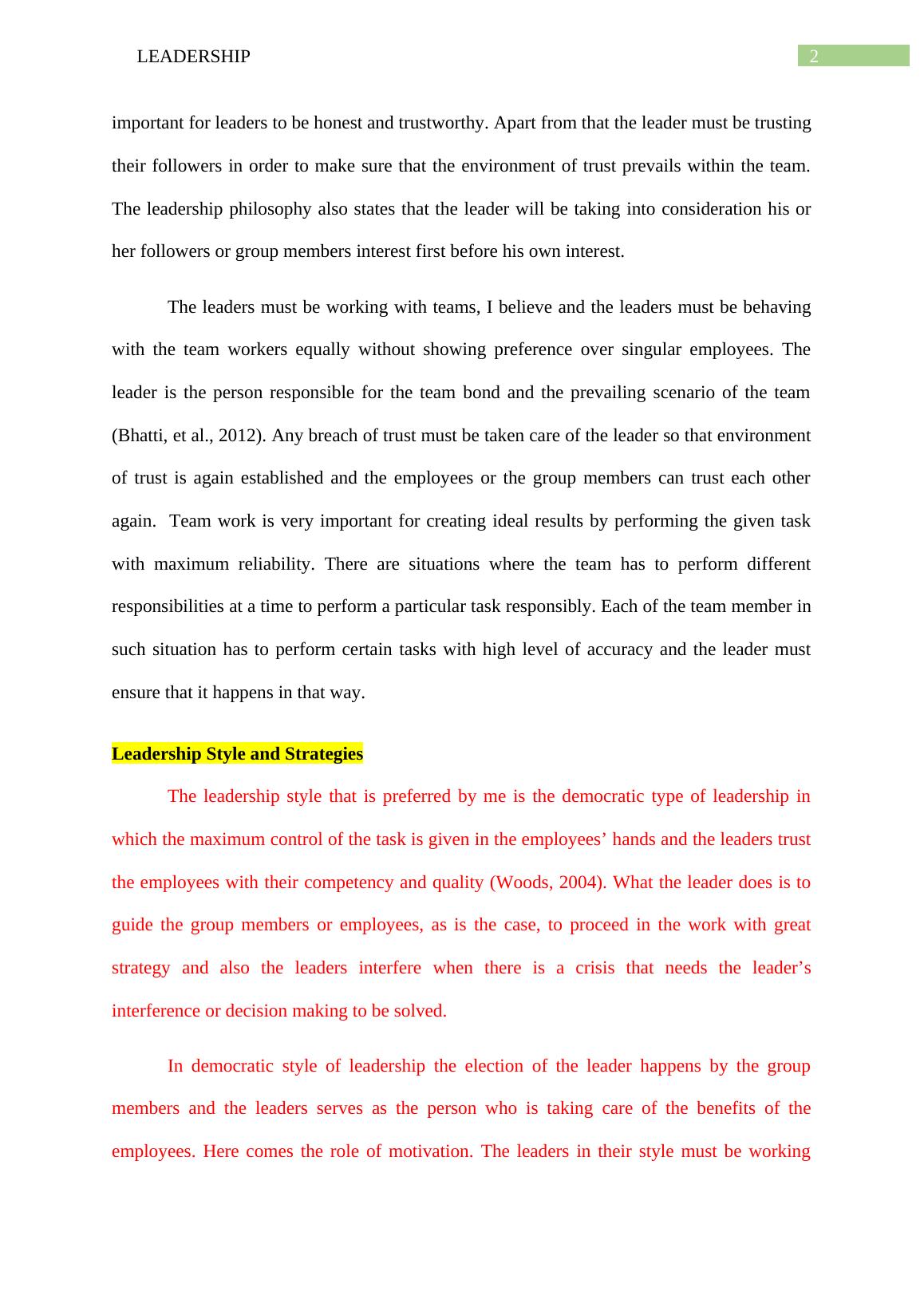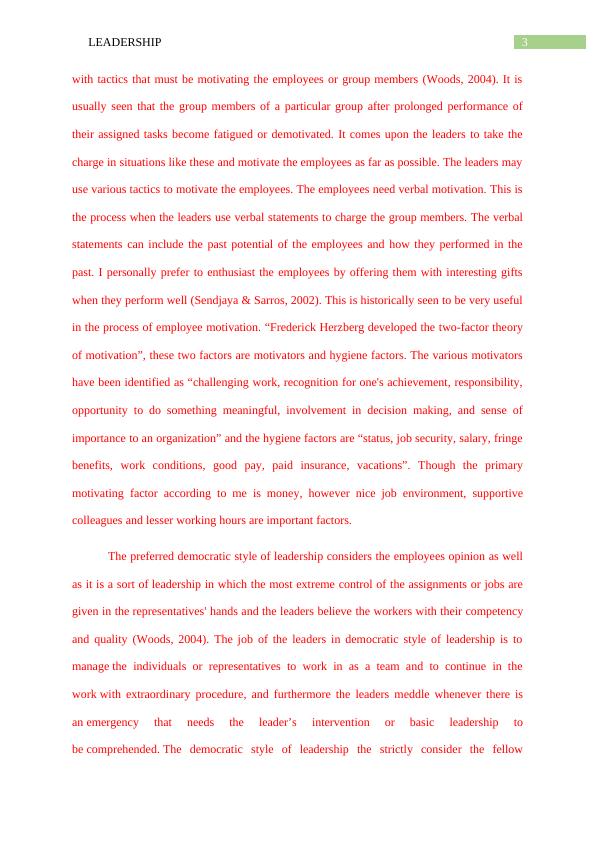Introduction Leadership - PDF
Added on 2021-06-18
12 Pages3575 Words167 Views
Running head: LEADERSHIPLEADERSHIPName of the StudentName of the UniversityAuthor note:

1LEADERSHIPIntroductionLeadership is one of the most important qualities that an individual must possess inorder to excel in fields where there is a need to manage people and complete work in teams(Giltinane, 2013). There are various responsibilities that are assigned to the leaders, andprimary of these is to manage the people and work in tandem with the employees to producecommon goals. It is often said that the leaders are born, that implies that the leaders are born withleadership qualities and they are naturally having the characteristic traits to be leaders.Whether or not a person is a born leader, every leader also has to possess many qualities andacquire qualities by learning the skills of leadership from external sources. Leadershipportfolio is the art of keeping a track in the leadership traits of a person. It is important for theaspiring leaders to keep a track on their leadership activities and learnings by maintainingleadership portfolio. In my case I have been always a introvert person. However in myjourney throughout the college while learning the art of leadership I have been able totransform my characteristics and after years of working on my traits I am now able to lead asmall group of people efficiently.Leadership Statement or PhilosophyA leader must be having the inherent qualities such as empathy, trust, honesty andteam work mentality. These are some of the characterise traits that must be followed by theleaders. I have always been a supporter of the leadership style that includes empathy andteam work. Some leaders have the characteristic of showing partiality towards certainmembers of the group. This is one of the negative aspects of leadership. I believe indemocratic philosophy of leadership in which the leader works with the team members andestablishes team work as the primary working principle of the whole machinery. It is

2LEADERSHIPimportant for leaders to be honest and trustworthy. Apart from that the leader must be trustingtheir followers in order to make sure that the environment of trust prevails within the team.The leadership philosophy also states that the leader will be taking into consideration his orher followers or group members interest first before his own interest.The leaders must be working with teams, I believe and the leaders must be behavingwith the team workers equally without showing preference over singular employees. Theleader is the person responsible for the team bond and the prevailing scenario of the team(Bhatti, et al., 2012). Any breach of trust must be taken care of the leader so that environmentof trust is again established and the employees or the group members can trust each otheragain. Team work is very important for creating ideal results by performing the given taskwith maximum reliability. There are situations where the team has to perform differentresponsibilities at a time to perform a particular task responsibly. Each of the team member insuch situation has to perform certain tasks with high level of accuracy and the leader mustensure that it happens in that way. Leadership Style and StrategiesThe leadership style that is preferred by me is the democratic type of leadership inwhich the maximum control of the task is given in the employees’ hands and the leaders trustthe employees with their competency and quality (Woods, 2004). What the leader does is toguide the group members or employees, as is the case, to proceed in the work with greatstrategy and also the leaders interfere when there is a crisis that needs the leader’sinterference or decision making to be solved. In democratic style of leadership the election of the leader happens by the groupmembers and the leaders serves as the person who is taking care of the benefits of theemployees. Here comes the role of motivation. The leaders in their style must be working

3LEADERSHIPwith tactics that must be motivating the employees or group members (Woods, 2004). It isusually seen that the group members of a particular group after prolonged performance oftheir assigned tasks become fatigued or demotivated. It comes upon the leaders to take thecharge in situations like these and motivate the employees as far as possible. The leaders mayuse various tactics to motivate the employees. The employees need verbal motivation. This isthe process when the leaders use verbal statements to charge the group members. The verbalstatements can include the past potential of the employees and how they performed in thepast. I personally prefer to enthusiast the employees by offering them with interesting giftswhen they perform well (Sendjaya & Sarros, 2002). This is historically seen to be very usefulin the process of employee motivation. “Frederick Herzberg developed the two-factor theoryof motivation”, these two factors are motivators and hygiene factors. The various motivatorshave been identified as “challenging work, recognition for one's achievement, responsibility,opportunity to do something meaningful, involvement in decision making, and sense ofimportance to an organization” and the hygiene factors are “status, job security, salary, fringebenefits, work conditions, good pay, paid insurance, vacations”. Though the primarymotivating factor according to me is money, however nice job environment, supportivecolleagues and lesser working hours are important factors. The preferred democratic style of leadership considers the employees opinion as wellas it is a sort ofleadership in which the most extreme control of the assignments or jobs aregiven in therepresentatives' hands and the leaders believe the workers with theircompetencyand quality (Woods, 2004). The job of the leaders in democratic style of leadership is tomanagethe individuals or representatives to work in as a team and to continue in theworkwith extraordinary procedure, and furthermore the leaders meddle whenever there isanemergency that needs the leader’s intervention or basic leadership tobecomprehended.The democratic style of leadership the strictly consider the fellow

End of preview
Want to access all the pages? Upload your documents or become a member.
Related Documents
Leadership styles and management theorieslg...
|8
|1366
|151
Leadership Management Assignment on Trait Theory, Situational, Transformational and Servant Leadershiplg...
|9
|2097
|464
Reflective Essay on Leadership: Qualities and Traits of a Successful Leaderlg...
|4
|749
|55
Leadership: Theories, Challenges, Application and Reflectionlg...
|5
|706
|153
Leadership Theories: Trait Theory and Behavioural Theorylg...
|8
|631
|51
Leadership and Strategic Managementlg...
|11
|3034
|316
